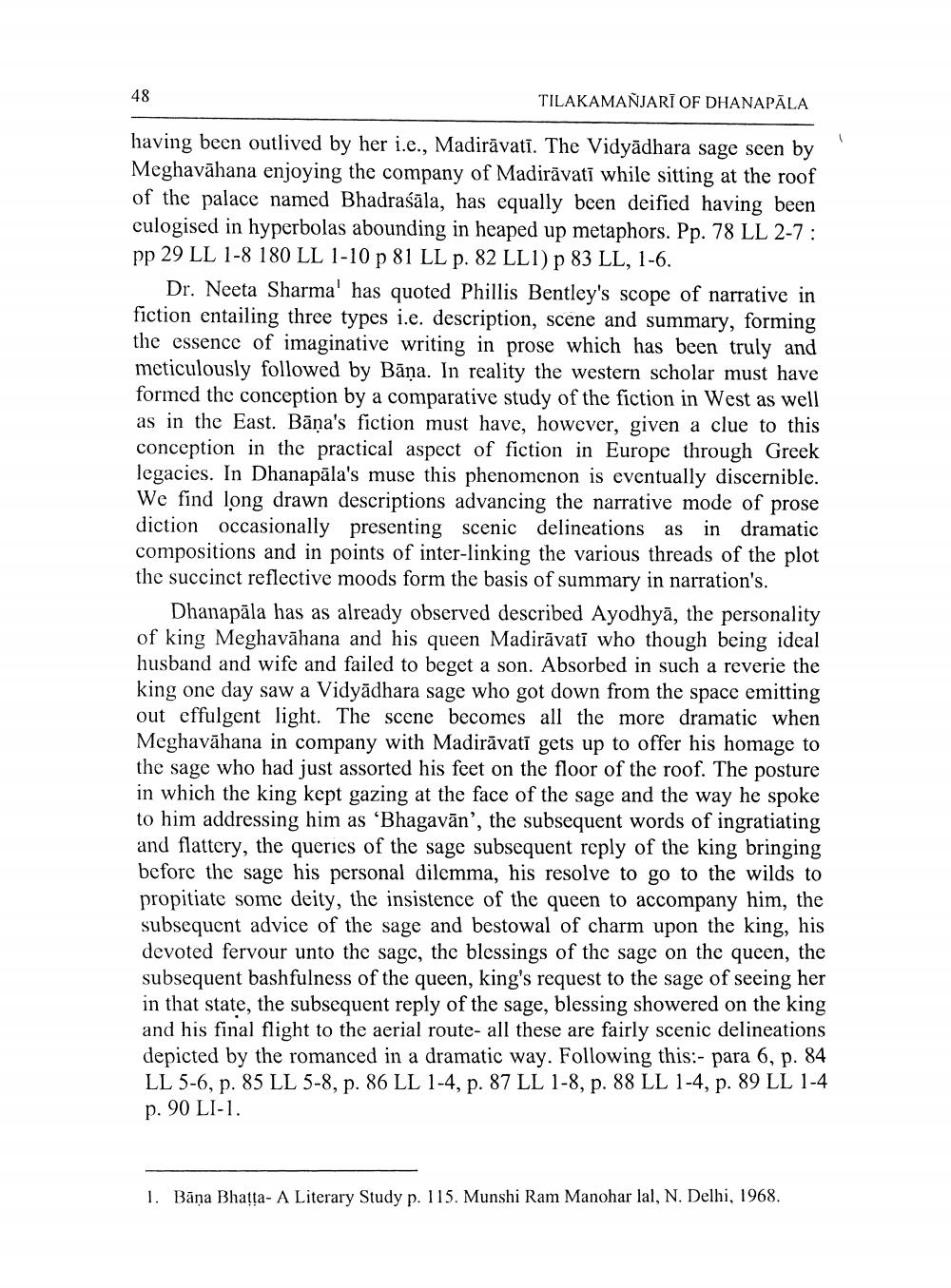________________
48
TILAKAMANJARĪ OF DHANAPĀLA
having been outlived by her i.e., Madirāvati. The Vidyadhara sage seen by Meghavāhana enjoying the company of Madirāvats while sitting at the roof of the palace named Bhadraśāla, has equally been deified having been culogised in hyperbolas abounding in heaped up metaphors. Pp. 78 LL 2-7 : pp 29 LL 1-8 180 LL 1-10 p 81 LL p. 82 LL1) p 83 LL, 1-6.
Dr. Neeta Sharma' has quoted Phillis Bentley's scope of narrative in fiction entailing three types i.e. description, scene and summary, forming the essence of imaginative writing in prose which has been truly and meticulously followed by Bāna. In reality the western scholar must have formed the conception by a comparative study of the fiction in West as well as in the East. Bāna's fiction must have, however, given a clue to this conception in the practical aspect of fiction in Europe through Greek legacies. In Dhanapāla's muse this phenomenon is eventually discernible. We find long drawn descriptions advancing the narrative mode of prose diction occasionally presenting scenic delineations as in dramatic compositions and in points of inter-linking the various threads of the plot the succinct reflective moods form the basis of summary in narration's.
Dhanapala has as already observed described Ayodhyā, the personality of king Meghavāhana and his queen Madirāvati who though being ideal husband and wife and failed to beget a son. Absorbed in such a reverie the king one day saw a Vidyadhara sage who got down from the space emitting out effulgent light. The scene becomes all the more dramatic when Meghavāhana in company with Madirāvati gets up to offer his homage to the sage who had just assorted his feet on the floor of the roof. The posture in which the king kept gazing at the face of the sage and the way he spoke to him addressing him as 'Bhagavān', the subsequent words of ingratiating and flattery, the queries of the sage subsequent reply of the king bringing before the sage his personal dilemma, his resolve to go to the wilds to propitiate some deity, the insistence of the queen to accompany him, the subsequent advice of the sage and bestowal of charm upon the king, his devoted fervour unto the sage, the blessings of the sage on the queen, the subsequent bashfulness of the queen, king's request to the sage of seeing her in that state, the subsequent reply of the sage, blessing showered on the king and his final flight to the aerial route- all these are fairly scenic delineations depicted by the romanced in a dramatic way. Following this:- para 6, p. 84 LL 5-6, p. 85 LL 5-8, p. 86 LL 1-4, p. 87 LL 1-8, p. 88 LL 1-4, p. 89 LL 1-4 p. 90 LI-1.
1. Bāna Bhatta- A Literary Study p. 115. Munshi Ram Manohar lal, N. Delhi, 1968.




